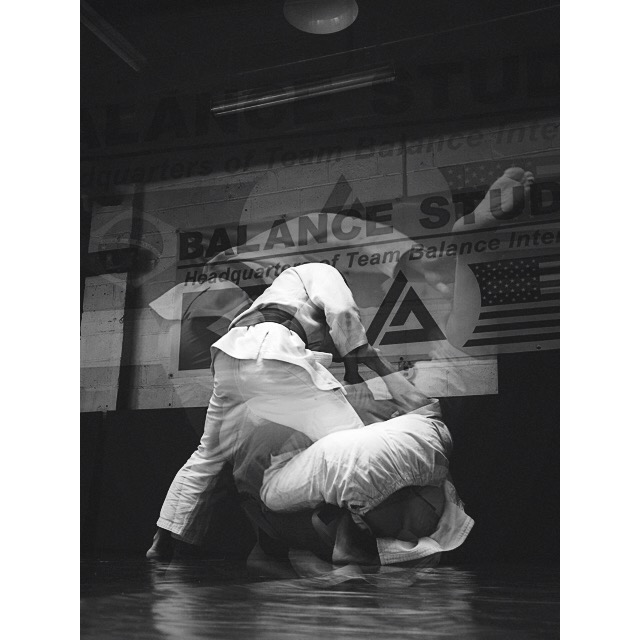Cost- How large is the initial investment? Will there be an ongoing cost or maintenance fee associated with this piece of equipment.
Footprint- how large is this equipment? Does it take up much floor space? Can it be stored away easily?
Portability- can you travel easily with this training tool? Will it fit in your training bag? How about your trunk or suitcase for your trip overseas?
Lifetime value- how long will this training tool last you? Will you be able to pass it on to your future generations?
With this criteria in mind here we go…
Nothing Trains Your Body Better Than Your Body…Duh.
The best BJJ conditioning tool is your own body, without a doubt, nothing trains your body better than your body. It’s always there; it’s highly portable and easy to travel with. It’s already paid for and the exercise possibilities are incredibly immense.
You can crawl, climb, run, jump, do solo BJJ drills, shadow wrestle…you name it, if you can imagine it, you can do it. Do I even need to speak about its lifetime value? Hopefully you’ll have it for a long, long time and if you treat it right you will.
Wanna Roll?
My number 2 on this list is someone else’s body. The only reason why someone else’s body isn’t #1 is because you may not always have access to a training partner. But all the same benefits of using your own body apply here as well, and can often be enhanced.
Since BJJ is a grappling sport it’s a great idea to actually apply force against another body, perhaps a body of equal or greater weight and a body that is resisting your own actions.
Drilling and sparring are excellent options of course but partner calisthenics are also a very effective method for getting into BJJ shape.
And again, the exercise options are limitless, resisted pull-ups, monkey boys, resisted partner push-ups etc…Use your imagination and match your training to the demands of BJJ and you’ll have some great results.
Numbers 3 on my list is dumbbells and kettlebells. Yes, I’m including these under the same number and yes there are some distinct mechanical differences between these training tools but it’s not that big of a deal to have a separate category.
I choose dumbbells and kettlebells next because they rank high for all my chosen criteria. They’re both very versatile, can be taken almost anywhere (I’ve taken them to Brazil and Mexico without any issue.) They don’t take up much space and you’ll be able to pass them onto your future generations quite easily. I’ve seen some vintage kettlebells and dumbbells for sale on EBay that are well over 100 years old.
Sure, they cost more than your body or a training partner (unless you plan on doing more than training.) but it’s a one-time investment and their lifetime value makes up for their initial cost.
Number 4 on my list is some form of suspension trainer. It could be a set of classic gymnastic rings, a TRX, an Airfit Pro or a Jungle Gym XT. There are many models and options to choose from currently and I appreciate and train with them all.
The exercise options when using a suspension trainer are quite broad and versatile. It’s very easy to make adjustments in leverage and angles making each exercise either easier or more difficult depending on your needs.
You should have no issues traveling with any suspension trainers. I’ve taken mine inside my carry-on luggage without any glitches on domestic and international flights. They don’t take up any floor space and can be taken down very easily and stored quickly.
Some suspension trainers are a bit on the pricey side. I suggest you investigate each option and match it with the type of training you have in mind. You may not need all the bells and whistles that come with some units.
Number 5 on my list is a favorite of many old-time grappling traditions…the sandbag.
I would have really loved to place sandbag training higher on my list but the truth is once you’ve built a nice sandbag it’s hard to travel with. You’ll be able to fit it into your trunk no problem but it is a pain. Trust me! I’ve done just that for years and it’s a pain.
But don’t let that stop you from using sandbag training for your BJJ conditioning.
Outside of your own body and the body of a resisting training partner, sandbags are the next best thing. Sandbags develop great grip and isometric strength. They’re excellent for performing loaded carries and walks and they’re generally very tough and hard to destroy.
There are several commercial sandbag options available, some great, some not so great. If you go the commercial route I recommend Ultimate Sandbags form Josh Henkin. But to be honest, I still love my homemade sandbag made from an old sea bag and duct tape.
Things I didn’t include.
I don’t like barbell training so I didn’t include it here on my list. I honestly feel barbell training is great for developing strength but not so great at developing other physical qualities like power and endurance.
Sure you can rock some O-lifts with your barbell but they’re rather tricky to pick up, and I’d rather you spend your time on the mat and you can train similar and equal movements with dumbbells and kettlebells.
What else? Any type of cardio machine, this is just too obvious. Besides being very expensive, taking up large amounts of space and limited in terms of training options you can accomplish everything cardio machines promise with creative coaching and programming.
What’s on your list?
I’m sure I’ve let some things off my list that you love to train with so let me hear about them. Shout out load and clear in the comment section below. But be sure to tell me why you train on those tools as well. Paz.






